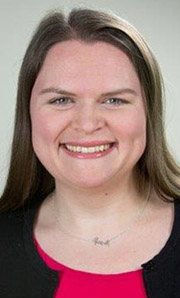If you’ve ever had to come up with a great idea in very little time, you likely know that creativity under pressure, or on-demand, is rare. When your church staff is feeling burned out because of endless planning or the stress of world events, treat them to a creative break.
I’m not just speaking to pastors or church staff members — creative breaks can (and perhaps should) be planned by laypeople who feel led to nurture and reinvigorate the staff, who so lovingly and selflessly devote themselves to the work of the church.
What’s a creative break?
Intentional time that is set aside to focus on fun, right-brain-engaging exercises will amp up creativity. A creative break could last for one hour, half a day or a whole day, whatever works best for participant availability. Just plan your activities with your time limitations in mind.
Attendees should participate fully and resist the urge to check email or take phone calls. This also is not a time to discuss to-do lists or brainstorm ideas for a specific project. If the staff does have a need to brainstorm about an upcoming ministry season, sermon series, stewardship effort, etc., scheduling a brainstorming session directly after the creative break could be extremely helpful since everyone will already be in an innovative state of mind.
What logistics do we need to consider?
- Location: Choose a space for your creative gathering that is out of the ordinary for the group. Rather than a conference room at church, meet in a park, at a congregant’s home or in your local library’s study room.
- Timing: Tapping into right-brain thinking is usually best achieved in the morning, before left-brain logic kicks into high gear as more and more decisions are made throughout the day.
- Supplies: Have paper, markers, sticky notes, flip chart paper, fidget toys and activity-specific items on hand.
- Sustenance: Ask about each attendee’s favorite snacks and beverages and be sure they’re available. This small touch of hospitality makes everyone feel welcome, comfortable and valued.
Now, what do we actually do?
Like what you're reading and the tools we provide?
Begin with a word of prayer, asking that a spirit of play and creativity will envelop the space and everyone present. Then, set the expectations and tone: no work, all play. Encourage everyone to loosen up, enjoy themselves and lean into a bit of childlike imagination and behavior. Their commitment to this now can amplify productivity later because they’ll leave the event feeling inspired.
Once the stage is set, launch into independent warm-up activities. Here are a couple of ideas:
- Nondominant handwriting: Ask each person to grab a pen and paper and simply write their name in print and cursive with their nondominant hand; then have them try writing it upside down, backwards, jumbled, etc. This quick exercise will immediately engage creative thinking because the right brain has to think so hard in order to do something counterintuitive.
- Color their world: Markers aren’t just for kids! This exercise will help the group relax. Ask everyone to draw/color patterns, shapes and doodles, trying to fill an entire piece of paper with whatever comes to mind. On a second page, have them draw/color patterns, shapes and doodles that relate to your church, ministries or community.
Now move to small group activities. These exercises are best for groups of five or less. Consider these options, but use your imagination to plan something that you think participants will enjoy:
- Be a builder: Give each group a box of random items — include craft supplies (feathers, yarn), small household items (a sock, board game pieces), office supplies (binder clips, paper), etc. A trip to a dollar store will provide everything you need. Each group’s box of items can be completely different, but be sure everyone receives one roll of clear tape.
Set a 15-minute time limit and ask each group to use only the items in their box to build something — literally anything — they want to create. Do not offer suggestions or answer any further questions; encourage the groups to lean on each other’s creativity for direction. Ask the groups to name their creation and compose a short narrative about what it is and what it’s used for. When the time is up, ask each group to present their work.
- Word play: Print off a set of words (try this one!) and cut them out so that there is just one word per piece of paper. Give everyone three words. Ask them to find two other people and create a phrase using all of their words.
Set a brief time limit — two minutes should suffice. When time runs out, ask if anyone would like to share their group’s phrase. The phrases will probably make no sense, which is why this is so fun! Then everyone should pick up three words and find two different people to create a different phrase. Repeat the activity as time allows.
Time for a break from the break! Take 15 minutes to go outside (or to a different indoor space) and do some simple stretching and deep breathing. If you have an energetic group, play a game of freeze tag!
Now it’s time for a large group activity. This portion of the creative break is a chance to be a bit more serious, if that fits your group’s personality. One of the below ideas might be perfect for your participants, but if not, come up with something that you feel will best engage them:
- Imagine if …: Ask the group to sit in a circle. Tell them that in this exercise, they can only ask questions. Start things off by saying, “What if our church wasn’t part of our community?” and let the group chime in from there.
You can allow the activity to unfold through self-led participation, but if you find that a small group of people is talking much more than everyone else, consider moving around the circle, allowing people to pass if they don’t want to participate. End the activity by asking something inspirational, such as, “What if our church was the catalyst that changes the world for good?”
- Piece of art: If you have an artistic group, this is an excellent way to wrap up your creative break. Set up a drop cloth and a large canvas on an easel, along with an assortment of paintbrushes and acrylic paints. Then invite the group to approach this art space one person at a time to add something — anything they’d like, from a splash of color to a drawing — to the canvas. After everyone has had a turn, tell them that the beauty of combined creativity can lead them to places they could never imagine on their own.
As a final exercise, ask each participant to describe their creative break experience in two words. Capture the list on a flipchart or whiteboard so the group can see the varied answers.
End the event by asking everyone to set a goal to tap into right-brain thinking as part of day-to-day work. Send them the MyCom article “Need ideas? Look in the mirror,” which suggests activities people can use to ignite creativity when approaching projects or tasks.
Given the many priorities we face each day, celebrating and exercising our God-given creativity doesn’t often top our to-do list. Planning a creative break like the one outlined above might be the refreshing experience your church staff has been thirsting for.

Laura Buchanan is senior content development specialist, communications/member communications.

